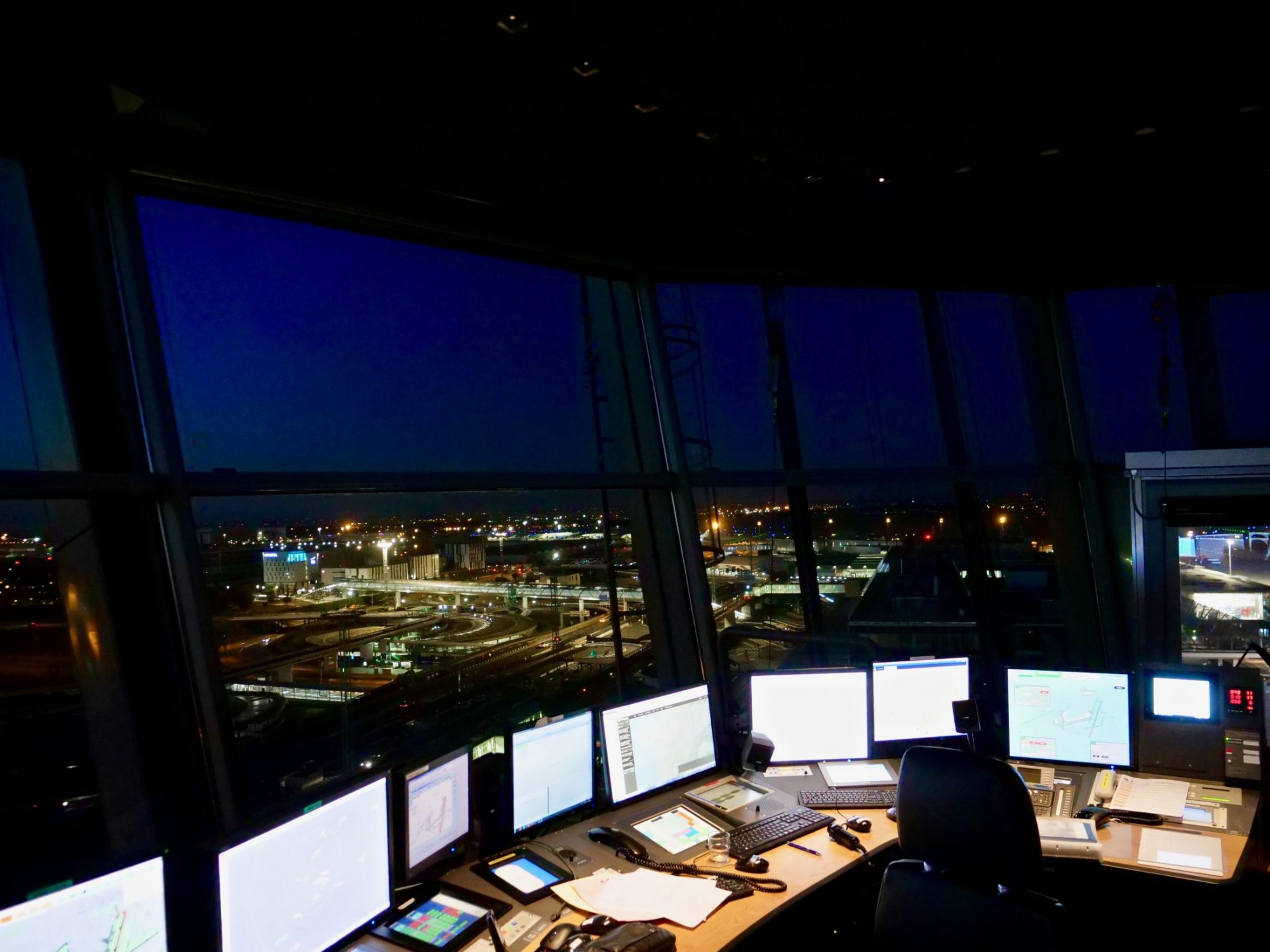A control tower in an airport is a bit like the centrepiece of a chess game. At Orly, the control tower is the place where we make sure that the planes take off and land in the safest possible conditions. Here the right to make mistakes is set just below zero. This means that every manoeuvre, every move, every arrival or departure must be 100% successful. And that the communication and understanding of instructions between the tower and the pilots must be perfect.
In the heart of the Orly Control Tower
Orly air traffic controllers are always the first and last to be in contact with airline pilots. During part of his flight, the captain is in touch with the air traffic controllers. They are the ones who make it possible to handle the ever-increasing traffic flow.
So there are three types of air traffic controllers—airport controllers who work in the tower with their approach controller colleagues. As for the en-route controllers who monitor the air corridors, they are located in CRNAs. There are five of these regional air navigation centres, and they are spread throughout the territory. They ensure the smooth operation of the flight as aircraft pass over the airspace.
Screens to manage complex air traffic

Paris is one of the most touristy cities in the world. It is also the capital of a country where everything is centralized. As a result, international flights rub shoulders with domestic flights. All this in a security context that is not always easy to manage. At peak times, it is sometimes necessary to make the planes wait or ask them to reduce their speed to manage a large number of simultaneous arrivals better. When the situation is no longer tenable, the aircraft is then turned around in circles in virtual parking lots near the airport. The planes then turn over each other, waiting for permission to land.
The control tower is a bit like the conductor who sets to music the flying broom of the planes. At Orly, it starts around 6 am until 11.30 pm, 365 days a year. The men and women in the tower are the guarantors of air security for the entire perimeter of the airport but also for the crossings between planes all around the airport.
On the other side are the pilots. They can be compared to musicians. They are excellent soloists who know their score by heart but who would be quite incapable of knowing how to make their way safely to their parking lot.
But unlike an orchestra, a cacophony at the airport would inevitably result in a Greek tragedy. As we wrote earlier, the right to make mistakes is on zero, and there is no room for error.
How does the arrival of a plane happen?
Five or ten minutes before the arrival of the aircraft, the control tower receives information from the approaching aircraft. A strip of paper is then printed; it is the “strip”. All the call signs are written on it, the transponder code, the call sign, the origin and the destination. On the strip, you will also find the name of the company and the type of device used.
From that moment on, the aircraft will be tracked. It will receive all the information about its course and especially its landing slot.
A 360-degree view from the tower
From the control tower of Orly airport, you can enjoy a 360-degree view of the entire airport and its surroundings. The windows are equipped with blinds that allow tinting of the windows, which is very useful at sunrise and sunset.
In the tower, the activity is never linear. There are times when a lot is going on, both on arrival and departure. So you have to know how to manage these quiet times and sudden peaks of activity. As you get closer to the critical hours, the stress and intensity increases. So adrenaline is part of the job. To avoid mistakes due to fatigue, air traffic controllers’ shifts are organized in an exact and unchanging manner. Because what is fundamental is to succeed in understanding a changing situation that can very quickly degenerate. For your information, the lowest speed of an aircraft is at the moment of landing. A plane can land at speeds of between 240 and 300 kilometres per hour.
In 2020, airport activities have been severely restricted, but surveillance of the skies remains essential.
Behind the scenes at the Orly control tower
At the very top of the tower are the air traffic controllers to manage the air traffic. They have at their disposal a whole host of computers, radars and control screens, as well as a direct link with each of the aircraft. However, to operate this high-tech equipment, computers and computer servers are needed. A sophisticated, ultra-secure network that is also managed by the services of the french General Department for Civil Aviation. A public body better known under the acronym of the DGAC.
Zoom on the control tower room
Among all the screens and controls, there is a radar screen that allows you to follow the arrival of aircraft in real-time.
These screens, therefore, make it possible to follow what is happening in the air. And it is thanks to the aircraft’s transponders that the information on the radars is more.
Among all the screens and control devices, there is a radar screen that makes it possible to follow the arrival of aircraft in real-time.
These screens, therefore, make it possible to follow what is happening in the air. And it is thanks to the aircraft transponders that the information on the radars is enriched.
Views of the airport from the Orly control tower
photo credits: Yann
thanks: @c@trn